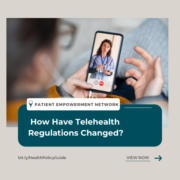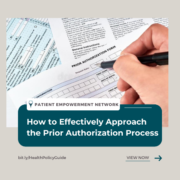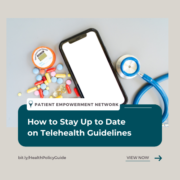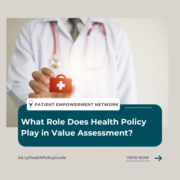How Have Telehealth Regulations Changed?
How Have Telehealth Regulations Changed? from Patient Empowerment Network on Vimeo.
Joe Kvedar, MD from the American Telemedicine Association discusses how telehealth regulations have changed since the start of the COVID-19 pandemic.
See More from the Health Policy Activity Guide
Transcript
Mary Leer:
Can you briefly describe how telehealth regulations changed during the beginning of the pandemic?
Joe Kvedar:
Yes, so as part of the original CARES Act, there were several things that happened. Some had to do with technology, some had to do with reimbursement, some had to do with privacy. And the whole idea was telehealth had to happen overnight, as you know, we sort of went into locked down them immediately in the middle of the month of March of 2020, and the government had the forthrightness to do some of these things. So, I’ll just tick them off at a high level, number one was Medicare and really all private payers began to pay for video visits with your doctor at the same rate they pay for an office visit. So that was a big one. The second one was that the doctor could use and the patient could use any technology, whether it be FaceTime, Google Meets, etcetera, Skype, to do those visits at the time, knowing full well that not all of those were HIPAA-compliant or exceptional privacy, but in order to get that going. That by the way, has since changed, perhaps we’ll come back to that later. And the third big one had to do with licensure and states, and so at the time, you could, as a doctor, I could practice across state lines. Again, that’s been whittled back subsequently as well, but the big one that stood the test of time has been about reimbursement, and that one has really led to about a 24-fold increase in the amount of telehealth that’s going on since if you compare April of 2022 with April of 2019, it’s about a 24-fold increase, extraordinary. And it’s been quite consistent over the last year or so, that we continue to see that, so it’s what we call two-channel healthcare delivery, and it’s been a wonderful thing to see happen.










